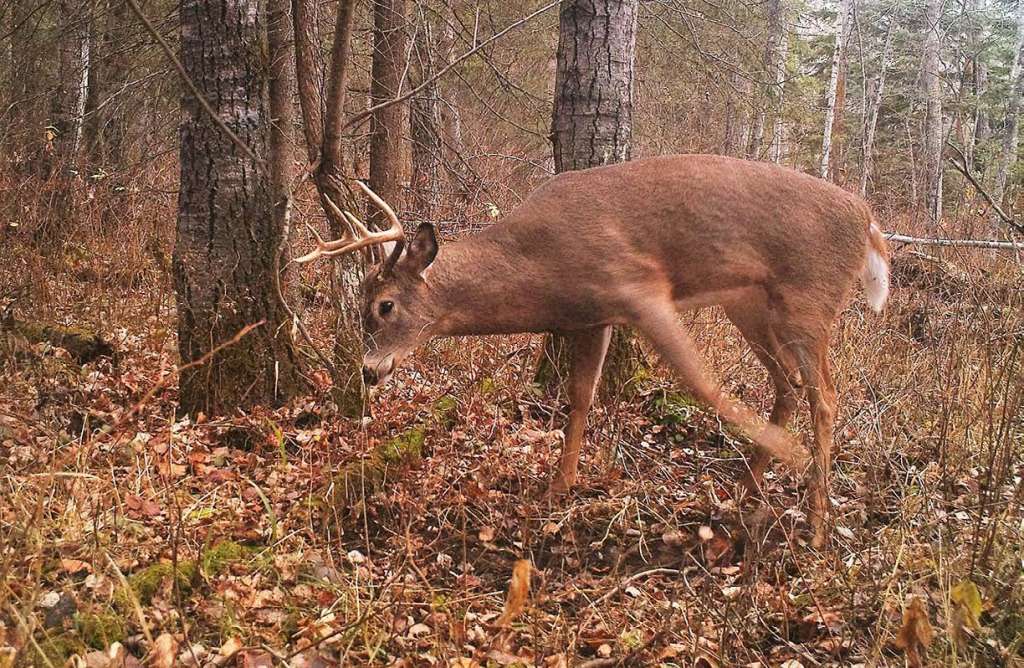He was clearly on a mission. The three-year-old buck broke from cover and beelined for the scrape a stone’s throw from my stand. The mother of all scrapes, it was visited regularly by what appeared to be every deer in the area. Measuring 45 inches in diameter, the bucks had dished it deep into the forest floor. Standing in it, the young buck sniffed, licked, and rubbed his orbital glands on the overhanging branch, then pawed at the ground and urinated.
Twenty minutes later, a doe with two older fawns visited the scrape. Following a similar routine, the doe sniffed the licking branch and scrape and urinated in it as well.
Fast forward a week, and my target buck—a deer I called “Myron”—showed up and worked the scrape while I was on stand. Unfortunately, the shot angle was wrong, so I let him go on his way. One day later, after an otherwise-uneventful morning, I committed the cardinal sin by climbing down midday to go and pull a couple of cards from nearby cameras.
As luck would have it, my buck visited the primary scrape during the 90 minutes I was gone. Caught on camera, his behavior was classic. He spent several minutes working the ground and probing the licking branch. Mentally chastising myself, I vowed to glue my carcass to that stand for all-day sits the rest of the season.
Then, as luck would have it again—the very next day as the second estrus kicked into gear, and with only a few minutes left in the day—a doe emerged. My target buck followed close behind. Stepping into range at 18 yards, I sent my arrow on its way. After a brief run, he collapsed 25 yards from the scrape!
Let’s break down the differences between a deer scrape vs rub and learn how to use this knowledge to your hunting advantage.
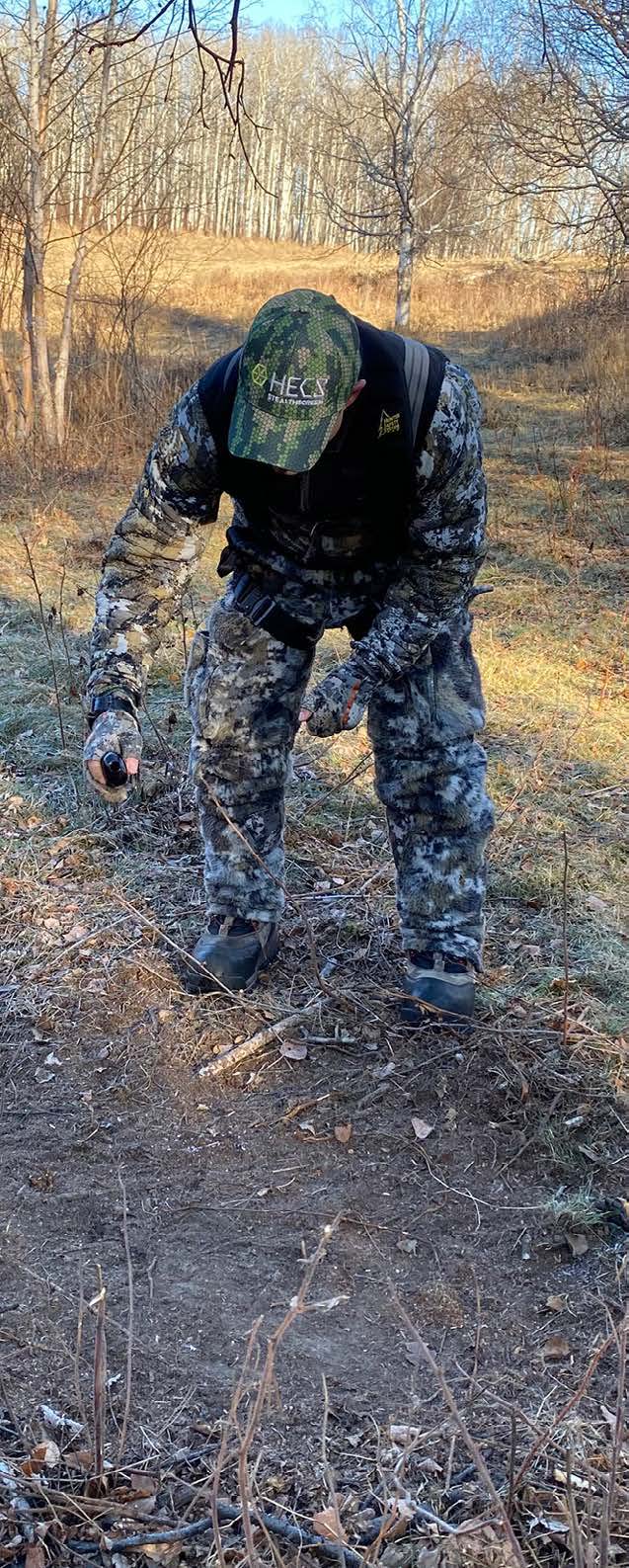
What Is a Deer Rub?
A deer rub is created when a buck rubs its antlers on trees, saplings, brush, or even fence posts. Throughout this process, the buck scrapes away the bark or surface to expose the fresh wood underneath. When making these rubs, bucks deposit scent from their forehead glands and pre-orbital glands onto the exposed wood.
This scent marking serves several purposes. First, it lets other bucks know of their existence—essentially announcing their presence in the area. Second, it can mark territory, helping establish their place in the pecking order as breeding season approaches. Finally, rubbing helps bucks polish their antlers and strengthen their neck muscles for upcoming dominance battles.
Bucks commonly create rubs on aspen, birch, spruce, and pine trees, though they’ll use a variety of other trees and shrubs too. You’ll start seeing rubs as early as September when bucks shed their velvet, marking the earliest stages of the pre-rut.
A common misconception is that small rubs are always made by small bucks. While smaller bucks will work only small trees, mature bucks will often rub both larger and smaller trees. When you find fresh rubs greater than eight inches in diameter, you may well be on the trail of a trophy-class buck.
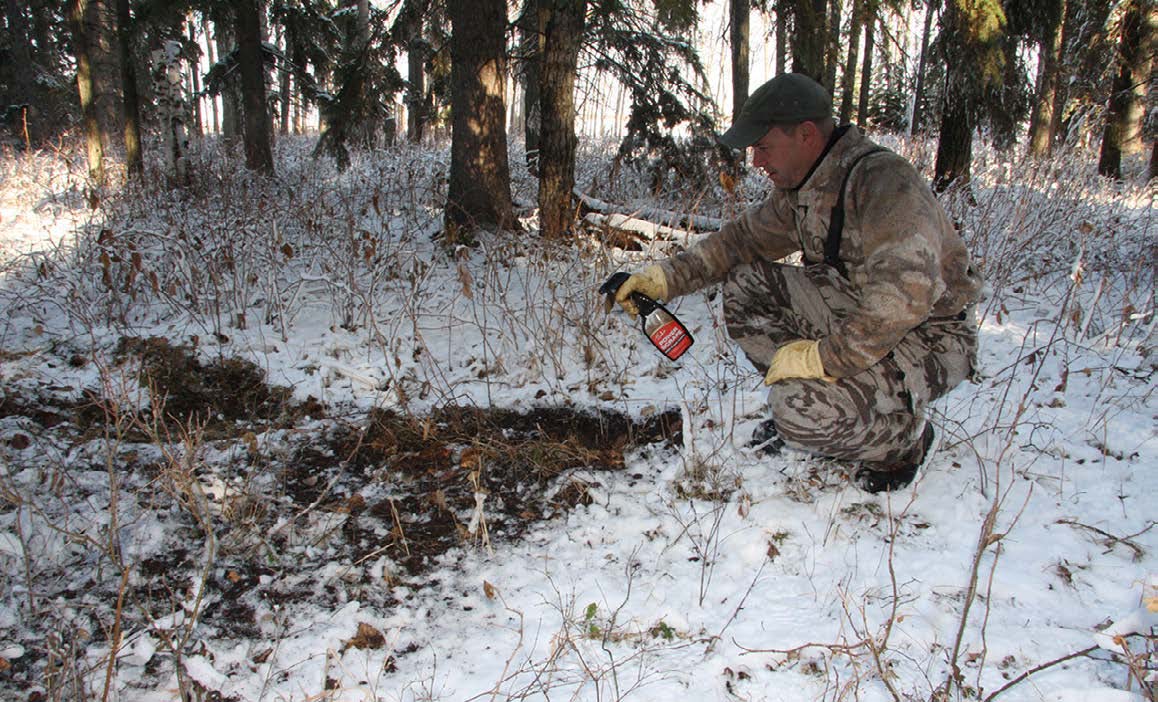
What Is a Buck Scrape?
A scrape, unlike a rub, involves the ground. A buck scrape is made when a buck paws the earth with its hooves to expose a bare patch of dirt. As he does this, he deposits secretions from the interdigital glands located between the toes of each hoof.
Scrapes are generally oval-shaped and are almost always found with a sapling or tree branch hanging over them. This overhanging branch is referred to as a “licking branch.” When creating the scrape, a buck will often rub its forehead and pre-orbital area on this licking branch to deposit scent.
After clearing the patch of earth under the branch, the buck will urinate in the scrape. This urine passes over the tarsal glands located on the inside of each hind leg, depositing additional scent. As a doe approaches estrus, she’ll also urinate in the scrape, alerting local bucks that she is, or will soon be, ready to breed.
In agricultural areas, the first meager scrapes of the year begin to show up as early as mid-September along field edges and tree lines. In heavily wooded areas, scrapes eventually show up on ridgelines and in thicker coniferous stands.
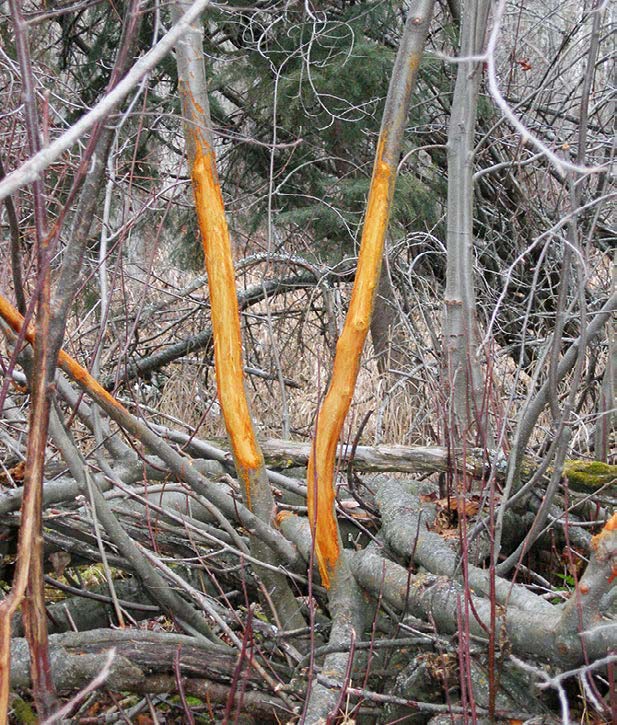
Deer Scrape vs Rub: When Are They Made?
Deer scraping and rubbing aren’t exclusive to the breeding season. Whitetails are aggressive animals that often assert dominance within the herd throughout the year. Despite their differences in appearance, rubs and scrapes share similar characteristics and can be classified into three categories:
Boundary Signs
Boundary rubs and scrapes are made around the edges of fields, farm roads, or open travel corridors. They’re typically found along the perimeter of some type of opening and are usually made during first light, last light, or at night.
Random Signs
A random rub or scrape is exactly what it sounds like—the result of a buck’s tendency to mark territory or simply because the mood strikes. Think of it like a male dog lifting its leg on a fire hydrant. If a branch happens to be hanging in the right place at the right time, a buck might stop and make a scrape under it. Similarly, he might rub a nearby tree. He may never visit these random signs again, so don’t put too much stock in isolated finds with no other sign around.
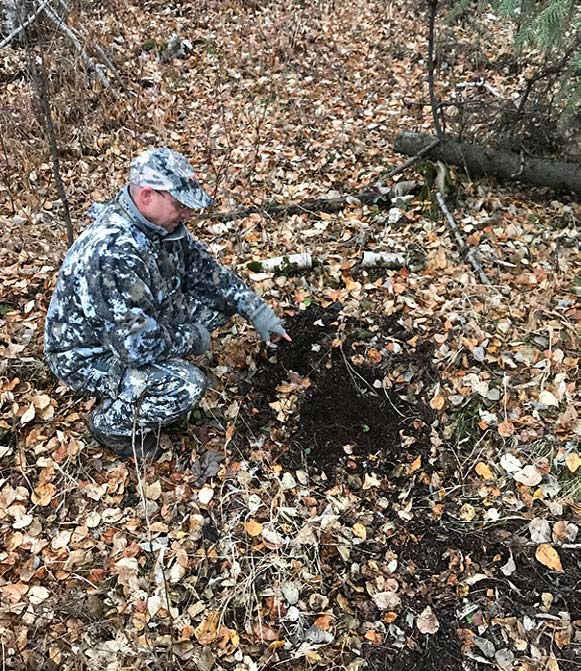
Primary Signs
Primary rubs and scrapes are the ones you should pay the most attention to. Primary scrapes are found along well-used trails and are visited by both bucks and does. Both will work the licking branches, and both will urinate in these scrapes. Some of the best primary scrapes to hunt are located near doe bedding areas and food sources, offering the best chance to catch a buck during daylight.
Primary rubs aren’t so much about single rubs as they are clusters. When you find groups of rubs in an area, it’s a good sign that bucks are staging there and will return. It’s like a meeting place where bucks check on local competition before continuing their travels.
By late October, bucks and does begin to focus on visiting primary or “community” scrapes. In northern regions like Alberta, October 26th is often when these primary scrapes start looking bigger, deeper, and fresher than others in the area.
As soon as the first estrus occurs (typically between November 10-15), bucks step up their monitoring efforts at these primary scrapes. Deer biologists suggest that bucks visit primary scrapes at least once every 24 hours during the estrus period.
Rub vs Scrape: Which Is Better to Hunt?
Many hunters disagree over whether it’s better to hunt over rubs or scrapes. In reality, mature bucks can be killed near either one, but here are some key considerations when deciding between a scrape vs rub setup:
Quality of Sign
A rub on a large-diameter tree might get your adrenaline pumping, but remember it’s just one rub. Similarly, a single scrape doesn’t guarantee that a buck will return. During the course of a season, bucks make hundreds of rubs and scrapes they never revisit. However, if there are enough rubs or scrapes to form a distinct “line” or pattern, you’ve likely found a travel route worth hunting.
Location
The best rubs and scrapes to hunt almost always have other rubs and scrapes nearby. A single big rub in wide-open woods with no other sign around might look impressive, but chances are it was made at night or was just random. Clusters of rubs and scrapes near bedding areas or food sources make prime stand locations.
Time of Year
Whitetails experience numerous changes throughout the season. Food sources, habitat, and bedding areas shift from when you find the first signs in September to the November rut. Always look for the freshest sign and base your hunting decisions on that. The best locations to hunt are the transition zones between current bedding and feeding areas.
As the rut progresses, buck scrapes and rubs change in importance. During pre-rut, hunting over scrapes can be more effective than hunting rub lines, especially in high-pressure areas. In contrast, during the peak rut when does are in estrus, those hot scrapes suddenly go cold as bucks focus on tending does. At this point, hunting near doe groups becomes more productive than focusing on either buck rubs or scrapes.
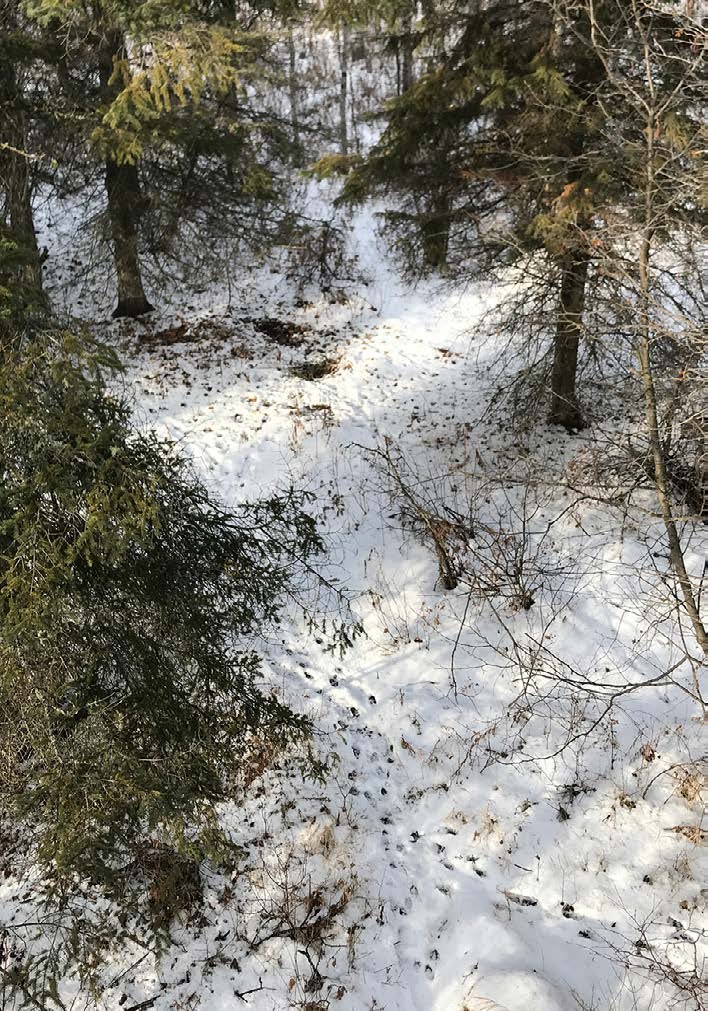
Using Mock Scrapes to Your Advantage
Aside from hunting natural primary scrapes, creating and hunting over a mock scrape can be a great strategy. Primary scrapes are often made in spots with no decent trees for a stand, or the best tree might be just out of range. A mock scrape offers an alternative that can be highly effective.
By building a mock scrape that competes with a natural one, you “call out” resident bucks and present a challenge. Dominant bucks are often eager to accept this challenge and will take over the mock scrape, regularly visiting and maintaining it themselves.
When making a mock scrape, wear scent-free gloves and use a stick to scrape back the ground at least 24-36 inches in diameter. If hunting a particularly large buck, make it even bigger. Kick back leaves and earth in one direction to make it appear natural. Adding commercial scent like Tink’s Scrape Starter can increase your success rate.
For the best results, place your mock scrape relatively close to or even right beside a natural scrape where you have a good shooting lane from your blind or stand. During the late pre-rut and estrus cycles, treat your mock scrape with doe-in-estrus scent to keep bucks interested.
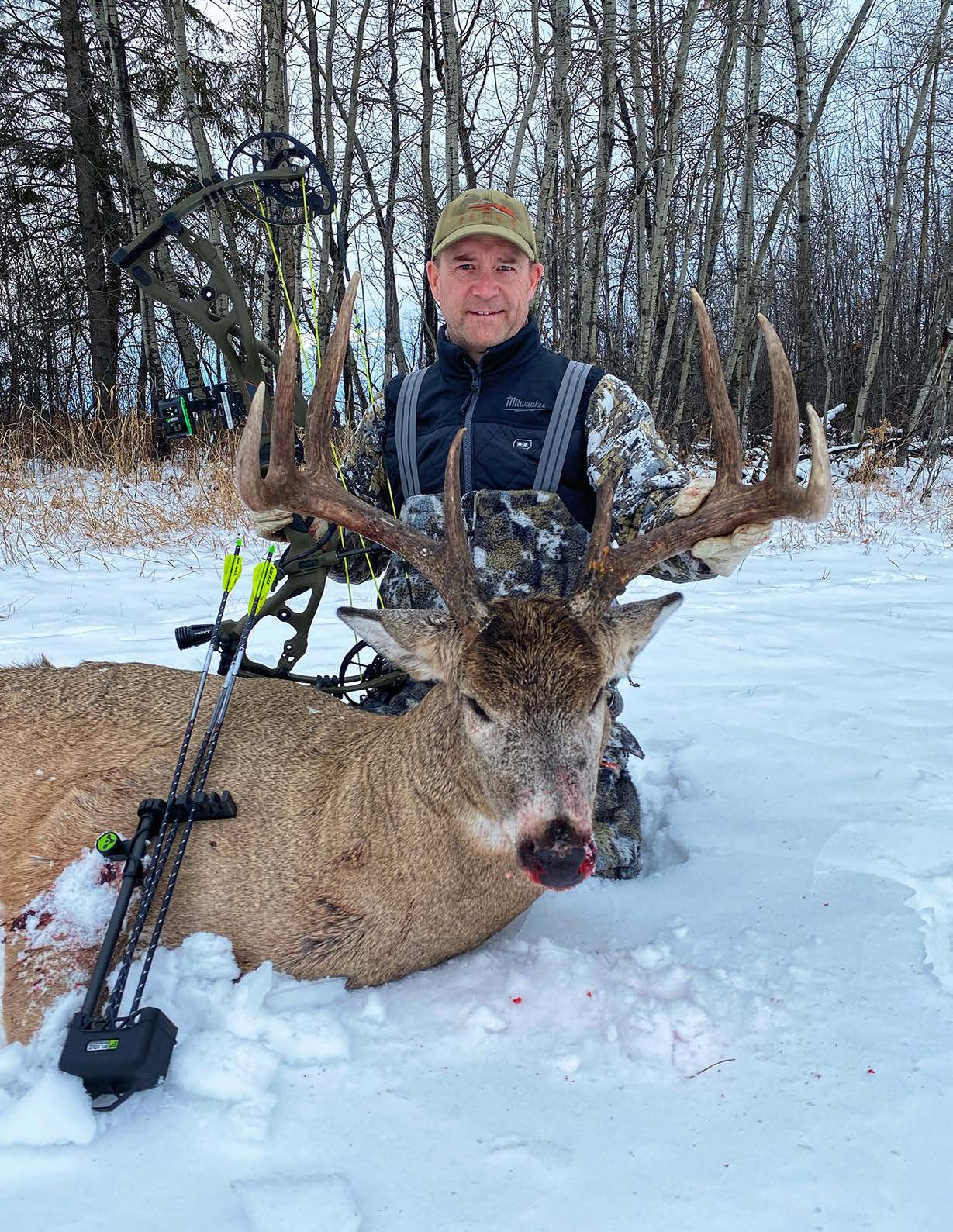
Understanding Seasonal Changes
Buck rub vs scrape hunting strategies should change as the season progresses:
Early Season (September – Early October)
Bucks begin making boundary scrapes and rubs to mark their home range. While you might want to note these early signs, don’t focus your hunting strategy on them yet.
Pre-Rut (Mid-October – Early November)
This is when deer scraping and rubbing activity increases dramatically. Primary scrapes emerge and are visited regularly. This is an excellent time to hunt over fresh scrapes, especially those near doe bedding areas.
Peak Rut (November)
Most scrapes suddenly go cold as bucks focus on tending estrus does. Your hunting strategy should shift from buck scrapes to areas where does congregate.
Post-Rut (Late November – December)
As the second estrus hits, primary scrapes are reopened and used for communication again. After the breeding season ends, deer abandon scrapes altogether until the following year.
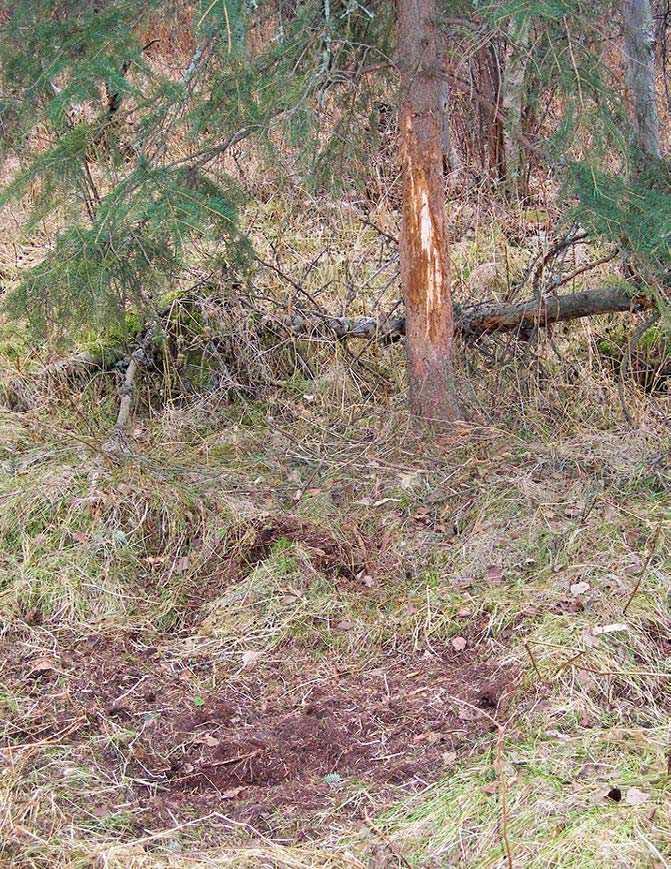
FAQ: Everything You Need to Know About Deer Scrapes and Rubs
Do does make scrapes?
Yes, does do visit and use scrapes, though they don’t typically create them from scratch. Does will sniff licking branches and urinate in existing scrapes, particularly as they approach estrus. This communication helps bucks know when they’re ready to breed. Trail camera studies have shown that does can make up a significant percentage of deer visits to scrapes during the breeding season.
Why do deer scrape the ground?
Deer scrape the ground to create communication stations. When a buck paws the earth, he’s exposing fresh soil where he can deposit scent from his interdigital glands (between his hooves). He’ll then urinate in the scrape, with the urine passing over his tarsal glands, depositing hormone-laden scent. This creates a scent-based communication hub where deer can share information about their identity, dominance status, and breeding readiness.
What does a deer scrape look like?
A deer scrape typically appears as a circular or oval-shaped patch of exposed dirt, usually 2-4 feet in diameter, though primary scrapes can be larger (up to 4 feet across). The ground will be pawed clean of leaves and debris, often with a depression in the center. A key identifying feature is an overhanging branch about 4-6 feet above the scrape—this is the “licking branch” that deer use to deposit scent from their facial glands. Fresh scrapes will have clean, recently disturbed soil, while older scrapes may begin collecting leaves or show signs of weathering.
Final Thoughts on Scrapes and Rubs
Understanding the difference between a deer rub vs scrape can dramatically improve your hunting success. By learning to read these signs correctly and adjusting your strategy based on the time of year, you’ll be in a much better position to fill your tag this season. Whether you choose to hunt over natural sign or create your own mock scrapes, paying attention to these communication hubs gives you insight into deer behavior that many hunters miss.
Next time you’re in the woods and spot what you think is a scrape, make sure it’s not actually a rub—and vice versa. Your hunting buddy might be impressed with your knowledge, and more importantly, you’ll know exactly what strategy to employ for a successful hunt.
Per our affiliate disclosure, we may earn revenue from the products available on this page.



